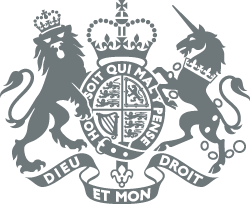February 2025: Five big AI news stories of the month
#News Center ·2025-02-28 11:33:15
Artificial intelligence (AI) continues to dominate headlines and coverage in the fintech space. We review the top five AI stories from February, from CaixaBank, Bank of New York, OpenAI, and more.
BNY enters multi-year partnership with OpenAI to advance AI transformation strategy
BNY to leverage OpenAI’s technology to enhance its Eliza platform
US banking giant Bank of New York has entered into a new multi-year partnership with OpenAI to accelerate its AI transformation initiatives.
The bank said it will leverage OpenAI’s technology to “enhance Eliza, its proprietary enterprise AI platform, and scale AI solutions across its global operations.”
Eliza, launched last August, uses AI insights to help BNY employees streamline their workflows, with more than half of employees using it regularly.
Now, through a new partnership, the bank will integrate OpenAI’s advanced reasoning models and ChatGPT Enterprise to enhance its capabilities.
UK government launches inquiry into AI use in banking and financial services
The UK Treasury Committee has issued a request for evidence as part of a newly launched inquiry into the growing impact of AI on banks, pensions and other financial services.
The inquiry will explore how the UK financial sector can use AI while managing risk and protecting consumers, especially the vulnerable. The committee is seeking views from industry professionals and the public, with responses due by March 17.
Through responses, the committee will better understand how UK companies are using AI, the potential impact on jobs in the sector, and the UK's competitiveness compared to other countries.
Anti-fraud platform Sardine completes $70 million Series C funding, invests in Agentic AI
Sardine completes $70 million Series C funding
AI-driven fraud prevention and risk management platform Sardine has raised $70 million in a Series C funding round led by US venture capital firm Activant Capital, with plans to launch a new AI agent for risk and compliance teams.
Sardine said in a statement that the funds will be used to launch "a suite of intelligent agents designed to streamline fraud and compliance operations, reduce manual workloads, and lower costs for financial institutions."
The company added that the agents will be used to "automate key investigation and compliance processes, allowing risk teams to focus on complex cases while ensuring accuracy and regulatory compliance."
Spanish CaixaBank launches "Cosmos" program to promote AI transformation
Spanish banking group CaixaBank has unveiled its latest "process and technology roadmap," called "Cosmos," which aims to develop new services, streamline operations, and increase "agility and commercial capabilities" across the bank's business areas.
The bank said the plan includes updating "existing channels" and developing new commercial and customer service capabilities through the use of GenAI.
This includes plans to automate "business processes and transactions" using artificial intelligence, aimed at improving decision-making and reducing "branch management burdens."
CaixaBank added that the technology will enhance employee interactions with customers across physical, remote and digital channels. Cosmos will also work to expand digital self-service, develop artificial intelligence agents, and improve cloud data infrastructure and real-time analytics.
Lloyds Banking Group Appoints Dr Magdalena Lis as Head of Responsible AI
Dr Magdalena Lis Joins Lloyds Banking Group
Lloyds Banking Group has appointed Dr Magdalena Lis as its new Head of Responsible AI, effective February 3.
The former Toyota head of analytics is now responsible for overseeing the “responsible development and use of AI” across the group, with a particular focus on safeguards and product improvements.
Lis joins Lloyds Bank’s growing AI team, which now has more than 200 experts, including Rohit Dhawan, who was hired by the group as director of AI and advanced analytics in August.
In comments, Lis said AI was “a huge opportunity” for Lloyds Bank, while Dhawan added that the group was “investing and hiring at a rapid pace”.

 English
English  Deutsch
Deutsch  Français
Français  Español
Español  Português
Português  Italiano
Italiano  にほんご
にほんご  Nederlands
Nederlands 





